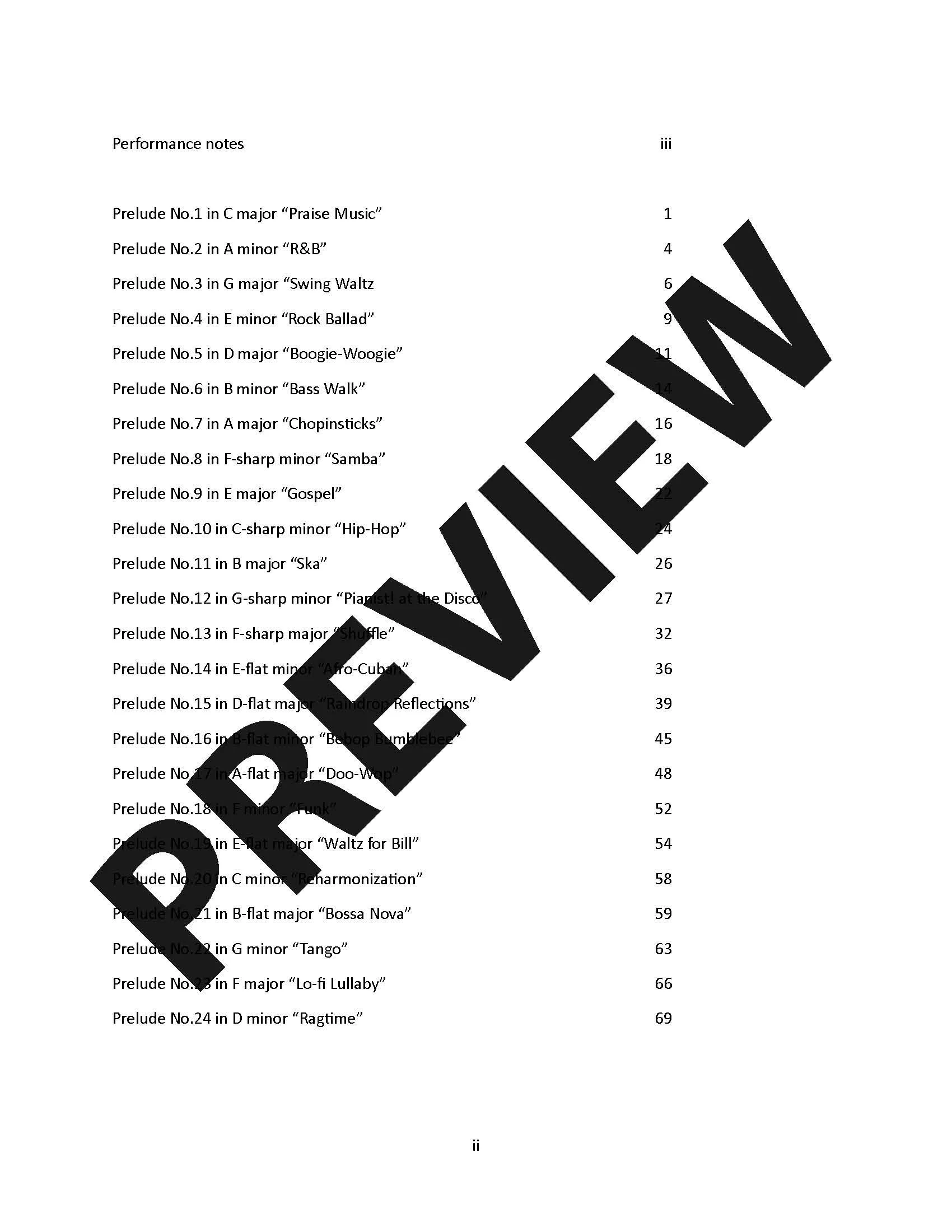I’ve always been fascinated with what the academics call “third stream” music - that is, the intersection between the classical and jazz worlds. Having grown up on American classic rock as well as the music of Frank Sinatra, Ella Fitzgerald, Louis Armstrong, Duke Ellington, and the like, I always felt at least partially out of place exclusively studying Bach and Beethoven. As a student, I found a wonderful outlet for these interests in the musical theatre world, both as a musician as well as an actor, and was introduced to the practice of improvisation at a rather young age.
In fact, these 24 Preludes in Popular Style after Chopin were first conceived of as live improvisations. At the onset of the COVID-19 pandemic and the lockdowns that followed, most teaching and university instruction around the globe was quickly pivoted to the virtual world. As such, while it was straightforward enough to conduct lessons and certain classes from behind a computer screen, I feared that students were missing out on an equally valuable part of their development - attending concerts and being exposed to new music through live performances. Despite having never done such a thing before, it seemed a worthwhile pursuit to sit down at the keyboard at home and livestream during students’ scheduled recital hours each week.
In these livestreams, we would explore different musical topics: historical trends across style periods, the piano works of specific composers over their lifetimes, guest discussion panels with colleagues and industry professionals, and workshops based on skills including sight reading and improvisation. On one such day before a scheduled stream, I was feeling particularly lazy… I noticed the score for Chopin’s Op.28 Preludes on my music rack from lessons earlier that week and decided to put my improvisational money where my mouth was and do a live improvisation session using the preludes as a basis. What came out of that entirely unplanned hour were some “interesting” and sometimes silly arrangements of Chopin’s music, which I thought nothing much of after ending the stream and going about the rest of the day.
It was only in the days and weeks that followed where I started getting emails from friends and colleagues from around the world, many of whom I haven’t heard from in years, and all to the effect of “I really loved your ‘jazzy Chopin’ - you should write those down!” that I started to formally piece a plan together. Around the same time, I was awarded a research scholarship to pursue a creative project and thought that arranging the improvisations towards a pedagogical publication would be a perfect way to make use of the support. Over the following two years, the preludes were accordingly arranged, prepared, premiered, recorded, and finally published.
There were several layers of considerations I wanted to keep in mind beyond simply writing pieces in each of the 24 different keys. Firstly, and of utmost importance, the preludes are intended to be used in the teaching studio - that is, the entire point of the project is to introduce classically-inclined piano students to elements of popular styles of music, familiarizing them with some of the formal and structural elements common to a variety of styles and genres while equipping them with an applicable and appropriate vocabulary in each style. As such, given the incredible range of both technical and musical demands inherent in Chopin’s original preludes, great effort was made to “match” the general level of difficulty and scope in their arrangements. It would be counterproductive, for instance, to expect a student who is learning one of the simpler preludes such as the A major or E minor to be able to handle a highly intricate and complex arrangement, as many of these works are typically given to beginners and young children with smaller hands and developing techniques. Likewise, a highly advanced student or professional concert artist who can handle some of Chopin’s more challenging preludes such as the B-flat minor or D minor may be likewise bored with a far simpler arrangement, given the inherent virtuosity required to perform the original work.
Additionally, I did not want to simply “swing” Chopin’s original score, but rather to create unique and innovative pieces of music that would stand on their own while still being related and inspired by their classical counterparts. The astute listener and Chopin connoisseur will recognize some of the more familiar melodic gestures and thematic elements in certain preludes, while others are based more so on harmonic frameworks or developed from smaller motivic ideas. The aim is to present an engaging set of pieces that any layman can enjoy intrinsically, while weaving in enough references, quotes, and “Easter eggs” for the dedicated Chopin aficionado to appreciate.
Given that jazz and so many popular genres are a largely aural tradition (as opposed to classical music which is almost exclusively a written tradition), the recorded performances of these Preludes are perhaps even more valuable than the notated score in terms of stylistic elements, articulations, voicings, and general “feel” of the playing - much of which would be impossible to accurately notate. Students and performers are hereby given full permission (and encouragement) to make the pieces their own, to explore sounds that may otherwise be considered “inappropriate” in the classical world, and even to include original improvisations as so moved.
It is my hope and wish that this music will bring enjoyment and inspiration to musicians and music lovers of all ages - especially young pianists and creative artists. While classical pedagogy and performance practice will always be a central pillar in any worthwhile course of study, may we also remember to always encourage creativity, exploration, improvisation, and allow music making to be fun.





